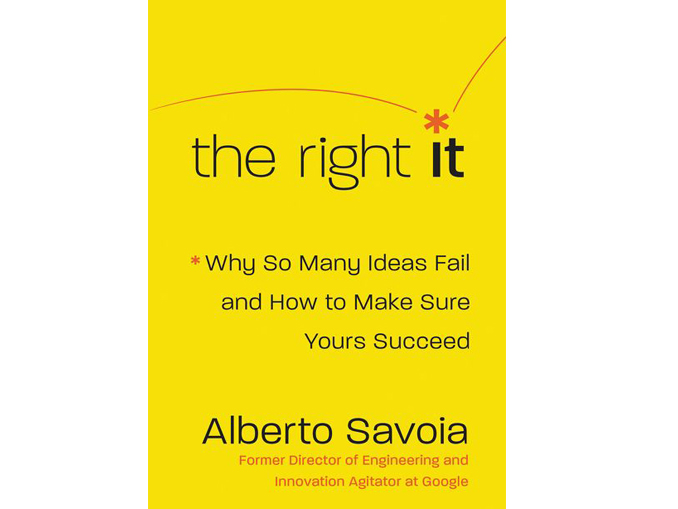Reviewed by Gloria Watson, Sklar Wilton, Toronto, Canada, gwatson@sklarwilton.com
Ninety percent of all new product launches are doomed to fail. Alberto Savoia, former Director of Engineering at Google and Stanford Business School professor, says failure is a monster that is a never ceasing, always nipping creature that is hungry to swallow up your next new product launch. And if you don’t confront this monster directly at the beginning of the innovation process, your new product idea will be doomed. But what if you had a secret weapon? A sword to slay the failure monster? Savoia has positioned his new book, The Right It, as the monster-slaying sword that will help give you a better chance to evade failure. But Savoia is a realist and appreciates that no approach is foolproof, and thus the book comes with a very overt caveat stating that neither the author nor publisher is responsible for any losses for those who try to apply these methods to launch a product.
Even with this caveat, the book is worth a read. It is a well-written practical guide that provides tools and frameworks to help maximize chances of success during the innovation process and launching something new to market. This book also has a sense of humor, and Savoia uses stories and concrete examples to drive home his message and to help clarify the processes that he is recommending.
The main idea of The Right It innovation process is to make sure you start with the “right it.” Any idea will fail if it is not what the market wants. You can build it perfectly, market it brilliantly, and distribute it without a hitch, but if no one wants it, it’s the “wrong it.” The tools in this book are meant to help you uncover what the “right it” is and how to build and launch it.
And while many tools are identified, the qualitative researcher in me kept coming back to something Savoia mentions quite early in the book. He urges the reader to get out of “Thoughtland” where there’s a lot of hypothesis and what he calls the “Hocus Pocus Focus Group.” I am not going to lie, as a qualitative researcher I was offended by his attempt to slay the value of focus groups. But stepping back, I understand his rationale and in fact have encountered similar reservations about qualitative research from my own clients who have the misperception that qualitative research is expensive and takes too long and, in the end, makes your research money disappear like a magic trick.
After I got over my initial offence at this idea, I had to admit, if qualitative research is something you think anyone can do (hey, it is just reading a script) and/or you use someone who is not qualified to design and moderate your qualitative project then yes, you shouldn’t go down that path, and it sounds like Savoia might have had those bad experiences. But I would argue that qualified qualitative researchers, coupled with the new tools and methods to conduct research for faster results, in cost effective ways can produce results that are credible and reliable. We can use AI to work with quantitative size samples and apply our qualitative methods. We can utilize mechanized tools to help us transcribe, translate, and analyze data for faster turnaround.
What I do agree with is the idea that we apply the right tools, at the right stage, in the right way. Market research should be like using a scalpel, not a hammer. If we make smart, insightful decisions, we come out with smart, insightful results.
This is a great book for someone looking for a new perspective on the innovation process, with practical tools and examples. But for me, it really helped remind me that we, as qualitative researchers, can help our clients through this process, and the research we do can add to the success of a new product if done thoughtfully and strategically.


1 Trackback / Pingback